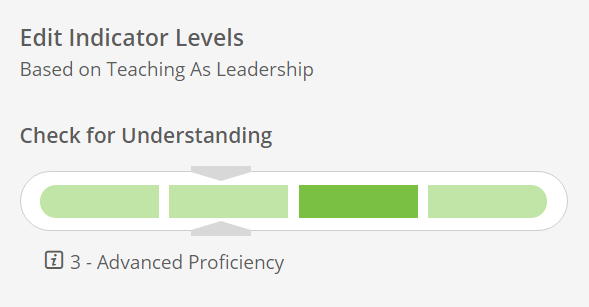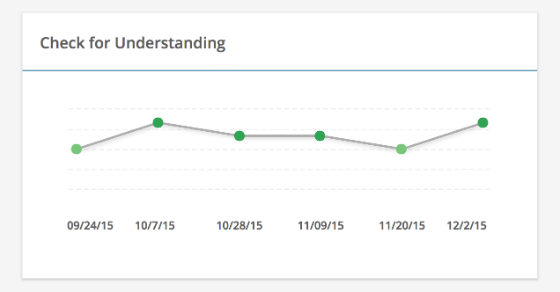Putting the Development into Professional Development Data
It’s the rare art exhibition that has only one piece of art. Rather, the collection of paintings tells the story of some aspect of the artist evolving over time.
To connect each painting to the broader story of the exhibit, the museum curator uses labels to highlight information about each artifact.1
We think the same is true when teachers reflect on their own practice and when coaches observe teachers.
One data point won’t tell the whole story, and a collection of classroom videos needs to be linked together using the common language of a teaching framework.
Edthena makes it easy to assemble a collection of rich, multidimensional records of teacher practice. And we’ve had frameworks integrated for several years.
In fact, there are many popular frameworks like Danielson Framework for Teaching, Teach Like a Champion, edTPA®, or High Leverage Practices, which educators use as a common language to describe teaching.
What was missing from the professional development landscape was a way to use frameworks to easily capture data that are useful for understanding changes over time and to actively support a growth-focused mindset during the reflection process.
Our solution to this challenge is Leveled Indicators.
Data aligned to professional skills
Leveled Indicators is a new component of Explorations, a toolset for designing and managing evidence-based learning cycles.
Imagine a coach created a professional development cycle focused on questioning strategies. Teachers can upload a video clip, provide a self reflection, and offer feedback to peers as part of the Exploration.
When the teacher requests feedback, the Leveled Indicators feature allows the coach to align their written feedback to a framework and capture the teacher’s current level based on all the evidence.
For example, the coach can type a summary comment and then record “Advanced Proficiency” on “Check for Understanding” within the Teaching as Leadership framework.
These data points are then shared openly with the teacher in a straightforward manner alongside the same evidence reviewed by the coach.
You may notice the small triangle shape visible along the Leveled Indicator display. That triangle shows the target level for the Exploration in addition to the level set by the coach for the teacher. Target Level is set in advance for the whole Exploration.
We think the use of a Target Level is important because it makes it clear to a teacher that perfection isn’t the expectation.
PD is about development, and it’s ok to be developing toward something over time.
Charting teacher development
Capturing these data serves two purposes: It helps make concrete where a teacher is along their developmental trajectory given the evidence available at any particular moment in time. And it also makes it possible to track growth over time with automatic reports.
 You know… tracking the development part of professional development.
You know… tracking the development part of professional development.
New reports for Leveled Indicators enable a coach to spot trends in teacher performance across an entire group of teachers, and teachers can quickly see their own growth over time and put that into the context of the group.
Say goodbye to complicated data analysis and hello to easy-to-navigate data visualizations that are built automatically by the Edthena platform.
We’re excited to be sharing details about Leveled Indicators, and we’re looking forward to how this will help organizations and educators accelerate their development through better data about professional development.
____________
1 In fact, there’s even an award for label writing.
